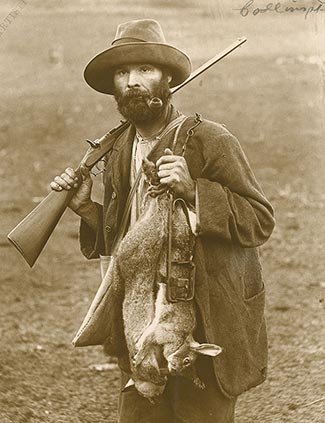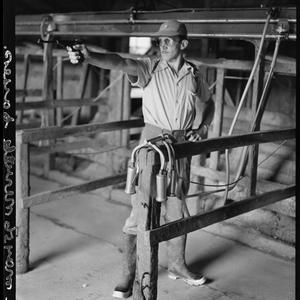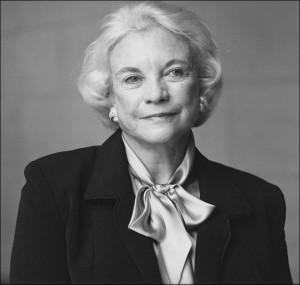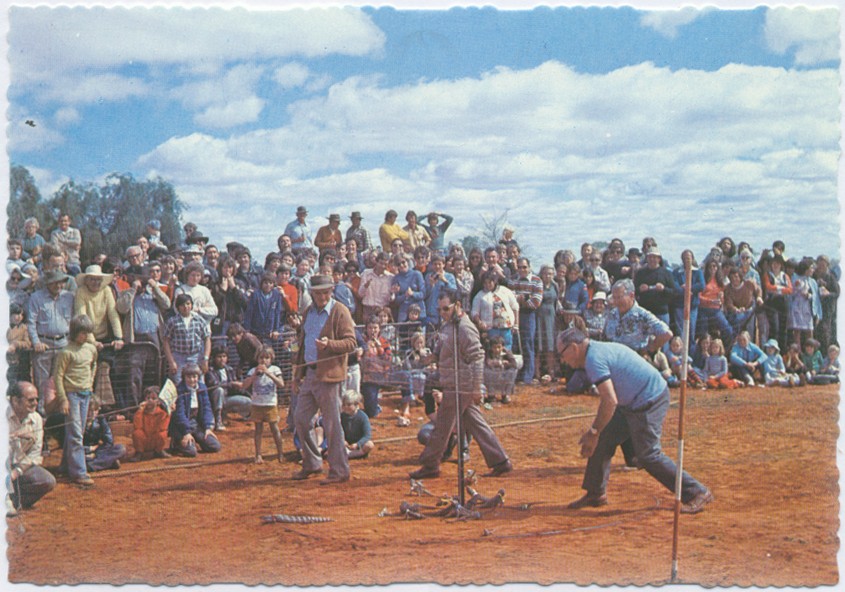 When I was an inhabitant of the Old Parliament House, there was a machine there which resembled a poker machine – the images whirled past when one pressed a button. The cards profiled each of the current members of Parliament at that time. General hilarity ensued when the machine settled on the agreed dumbest politician in Parliament. Then there was always a clear winner, which always drew cheers and laughter when you hit on that particular member, the decisive winner by a large margin.
When I was an inhabitant of the Old Parliament House, there was a machine there which resembled a poker machine – the images whirled past when one pressed a button. The cards profiled each of the current members of Parliament at that time. General hilarity ensued when the machine settled on the agreed dumbest politician in Parliament. Then there was always a clear winner, which always drew cheers and laughter when you hit on that particular member, the decisive winner by a large margin.
But if we did it today, the winner would be less clear. There are some very dumb members of Parliament and, unlike the winner in the good ol’ days, some of the most stupid are dangerous because they wallow in the mud of their crackpot conspiracies.
Part of this is due to the fragmentation of the electorate into distrust of the conventional self-seeking mob. Therein lies the inherent weakness of our current system, writ large. Isolation.
There is an increasing tendency for aspirant politicians to spend their early adult life in a politician’s office, as though an apprenticeship in the political world mirrors actual life and provides useful experience. Rather, it is a selective and often nasty, pointless existence.
These offices provide a festering apprenticeship in arrogance and the “kiss-up, kick down” of petty politics. Albanese, who started on the fringes of the Hawke office is a classic example of enduring this phenomenon; whereas persons like many of the so-called Teals have had a totally wider experience having lived outside the zoo for most of their career.
You just have to look at the corruption and “cock-ups” of Australian intra-structural projects this century. This has culminated in the most evident of them all – the road disaster in the inner-west of Sydney. From now on there is a new word in the Australian language for all this – the “Rozelle Interchange”.

And they have the hide to want to increase the number of Politicians. God, another “Rozelle Interchange”.
Cry for Us, Argentina

(Pope Francis) as a cardinal in Buenos Aires — home to one of the world’s largest Jewish populations — Francis was known to celebrate Jewish holidays with locals, helping to light menorahs during Hanukkah.
In 2015, he marked the 50th anniversary of Nostra Aetate — the Vatican II declaration that sought to remove Biblical-era blame for Jesus’s death on the Jewish people — with one of the strongest defences of Israel by a sitting Pope. “To attack Jews is antisemitism, but an outright attack on the State of Israel is also antisemitism,” he said.
More than previous pontiffs, though, the first Latin American Pope has also championed human rights, seeing the downtrodden, the underdogs and the oppressed as his primary cause. He reflects the Global South’s general distrust and scepticism of the West and its allies, as well as more sympathetic views toward Palestinians and Russia
Israeli President Isaac Herzog held a fraught phone call with Pope Francis. The Israeli head of state was describing his nation’s horror over the Hamas attack on October 7 when the pope issued a blunt rejoinder.
It is “forbidden to respond to terror with terror,” Francis said, according to a senior Israeli official familiar with the call, which has not been previously reported.
Herzog protested, repeating the position that the Israeli government was doing what was needed in Gaza to defend its own people. The Pope continued, saying those responsible should indeed be held accountable, but not civilians.
That private call would inform Israeli interpretations of Francis’s polemic statement, at his November 22 general audience in St. Peter’s Square, that the conflict had “gone beyond war. This is terrorism.” Taken with the diplomatic exchange — deemed so “bad” by the Israelis that they did not make it public — the implication seemed clear: The Pope was calling their campaign in Gaza an act of terrorism.
These extracts came from The Washington Post, and interleaved into forthright criticism of the Israeli actions towards Gaza is a foreboding sense of how the Pope can be isolated. Of course, he could mysteriously die, a not unusual fate of popes. Nevertheless, unless his death is unambiguously due to natural causes, the number of books blaming the Israeli Government on his death would stretch even the Israeli public relations juggernaut to explain away.
On Thursday a week ago Hamas claimed having killed four people and six others were wounded when two Palestinian gunmen affiliated with them opened fire near a bus stop on the outskirts of Jerusalem. Not exactly a flame retardant.
Henry Kissinger dying the other day reminded me of what happens if one carpet bombs a country and sows the countryside with mines. Kissinger effectively destroyed the fabric of Cambodia enabling a bunch of fanatics to fill the vacuum. Even now, the evidence of Kissinger the misanthrope survives as his legacy. Intensely intelligent, he played to the dark side of personality, a not too difficult trick when you are working for Richard Nixon.
When you weigh up diplomacy which depends on the ultimate in detached brutality, the war plane, the more it is being shown that bombing destroys, but it leaves a vacuum. If the Israelis are intent on carpet bombing, they may kill the innocent population excused as always by that population shielding Hamas. Hamas unsurprisingly survives. Ordinary people just want to go about their lives.
The fact that Israel is a military camp makes life difficult if you are infested with all the trappings of military aggression, whether you are man or woman (unless of course you are dressed in black with that distinctive headgear).
If you follow that distorted view, you may destroy the shield but not those supposedly sheltering behind the shield. The story of the American Middle East Policy in a nutshell, but Israeli fangs are embedded in your Washington wrist.
Biden, you should talk to the Pope more often, given he is your spiritual boss.
Just a Bullet
I think it was during my third university year. I was sitting on a tram one summer evening travelling through the inner Melbourne suburb of North Fitzroy when I heard a crack by my right ear. I half turned and saw a bullet hole in the window. By its size I reckoned the bullet had come from an air rifle. The window on the other side was lowered because of the evening heat.
I immediately told the tram conductor, who just shrugged and murmured that it happened all the time. That was that. I did not report it to the police as I had an important person to meet.

In the 1950s, there was a certain laissez-faire attitude towards firearms. The Second World War was still fresh in the mind of communities. After all, there was a certain satisfaction about shooting that vermin, the rabbit. It provided a major source of protein during the Great Depression. You could buy a rabbit, so-called “underground mutton”, from one these itinerant rabbitohs. Rabbit fur was popular for women’s hats, apparel and as trimming for collars or dresses until the 1970s. Rabbit fur was also used to make felt hats – the essence of the Akubra.
On one day of the year, we school cadets had to go to the Williamstown rifle range on the edge of Port Phillip Bay, a windswept, isolated patch of ground well away from civilisation naturally. The night before this excursion we were all issued with .303 rifles, instructed to remove the bolt and put it our school bag (in those years the Gladstone bag was the most popular). So, for this one day of the year, there was a group of schoolboys carting WWII rifles all over Melbourne on public transport. There was a general acceptance; no letters of outrage to the papers.
I wanted my long-suffering sons to become proficient in the Pentathlon sports. This included pistol shooting. After introduction to firearms with air rifles, they switched to pistol shooting. Because they were minors, I was fingerprinted and was required to house the pistols in a secure pistol safe, which was placed in the storage area beneath the stairs.
The pistol range itself was in an isolated area under the Bolte Bridge. The pistol shooters were a mild-mannered good group of fellows, who taught the boys how to use the centrefire pistols. Apart from a brief outburst from one of the boys, they became very competent and moreover learnt what could be best described as shooting etiquette from these generally excellent diligent role models who ran the pistol club. These guys were hardly the pistol packing caricature of “gumshoe fiction”.

Proficiency was the initial goal; competitiveness was another. As Neville Sayers, a pioneer pentathlete, said to me at the time, “To be competitive you had to be a very good swimmer”, as the distance then to swim in competition was 300 metres freestyle. That was a goal too far for the sons, but they did become very good fencers.
A Hidden Agenda – Not so Much
Susan Neiman is an American moral philosopher. Her Wikipedia entry states that she wrote Slow Fire, a memoir about her life as a Jewish woman in 1980s in Berlin. It was published in 1992. From 1989 to 1996, she was an assistant and associate professor of philosophy at Yale University, and from 1996 to 2000 she was an associate professor of philosophy at Tel Aviv University. In 2000 she assumed her current position at the Einstein Forum Potsdam.

She has recently written “You must remember what Amalek has done to you, says our Holy Bible. And we do remember,” said Benjamin Netanyahu on 28 October. There’s no point wasting words over the lifelong secular conman’s sudden interest in biblical texts, or even in asking whether it’s kosher to follow an injunction to wipe out enemy tribes if your main object is to prolong a war in order to stay out of jail.”
This is reprinted from The New Statesman. Therefore, in terms of the claque that surrounds Bibi, she is just a leftie ideologue.
Under Your Spell

The US National Spelling Bee, funded by Scripps Howard (since 1941), this year was won by an eighth grader from Florida, Dev Shah, who studied up to 10 hours a day to finally correctly spell psammophile, a plant or animal that loves living in sandy soil. You know, those who lounge on Bondi beach – well not really, but those limited creatures and plants who prefer to live in sandy areas, poor buggers. You know, Jerboas, kangaroo rats and cacti.
This was the 95th year of the competition, which commenced in 1925 when the winning kid won by correctly spelling “gladiolus”. At that time the first two spelling bees were sponsored by the Louisville Courier Journal, which was owned by the liberally-minded Bingham Family. It is a strange sensation, when I am writing about some kid today winning $50,000, and I remember that I had a very pleasant meeting once with members of the Bingham family, one of the backbones of Kentucky society. They even gave me a history of their family.
“Gladiolus” also made think of Barry Humphries when I found out that first winning word, but he was not to be born for another nine years, when the winning word was “brethren”.
Compare the shoals of difficulty that had to be negotiated this year. Dev Shah had to spell “bathypitotmeter,” an instrument that measures the velocity and temperature of water at certain depths, before triumphing with the sand lover.
Most of the winners in the past two decades are boys and girls with a sub-continental heritage, as Dev Shah has. Dev Shah is 14 years old and in his last eligible year, but an experienced competitor.
Why is it called “a bee”? There are several theories, but nobody really knows for certain.
“Sandra Day O’Connor is Gone. So, increasingly, is what She stood for.”

Former Supreme Court Justice Sandra Day O’Connor, who died on Friday (1 December) at 93, was a trailblazer in more ways than one. The daughter of Arizona cattle ranchers, she tended the herd on her way to graduating third in her class at Stanford Law School in 1952, before becoming the first woman on the Supreme Court.
When President Ronald Reagan chose her for the job, few knew who she was: at the time, an obscure state appeals court judge. Unlike other justices, she rose to the pinnacle of the judicial branch by way of lawmaking in her home state’s legislature. From this, and her years on the ranch, she brought a practicality to the court that most of today’s justices lack.
In this sense, Justice O’Connor represents an era regrettably past — a time when government leaders cared about getting things done collaboratively. With her guidance, the Supreme Court weighed carefully the impact its rulings would have on Americans. In oral arguments, she would often ask how a hypothetical ruling might affect real people and institutions. She was far from being an abortion rights activist, yet she provided the key vote to uphold the core elements of Roe v. Wade in the landmark 1992 Planned Parenthood v. Casey ruling, explaining in a co-written principal opinion that a generation of women had come of age relying on the constitutional right to abortion.
“Rare indeed is the legal victory — in court or legislature — that is not a careful by-product of an emerging social consensus,” she wrote in a 2003 essay collection. If only that were true today, as polarised factions within the court and in Congress too often seek to impose ideological views rather than examine the evidence and reason with facts, to apply raw power rather than build consensus.
Justice O’Connor was an avatar of change and progress, but she was also painstakingly centrist. She was the key middle vote that swung the court toward some of its most consequential conclusions. Overshadowed in cultural memory by former justice Ruth Bader Ginsburg, she had more influence on the law in her time.
She was among the 5-4 majority in the Casey decision, which preserved abortion rights for another generation but also allowed for greater state regulation, as long as it did not impose an “undue burden” on women’s access. This satisfied neither liberals nor conservatives.
Not merely the right woman, Sandra Day O’Connor was the right justice.
Similarly, in 2003, she wrote the majority opinion upholding university affirmative action in Grutter v. Bollinger, declaring that affirmative action’s “benefits are not theoretical but real,” even as she said the “Court expects that 25 years from now, the use of racial preferences will no longer be necessary to further the interest approved today.”
Grutter reflected Justice O’Connor’s empathy for those who, like her, faced social obstacles based on characteristics such as race, gender or sexual orientation. She recounted how, when she was just out of law school, she could get a job only as a legal secretary.
She was inspired by Justice Thurgood Marshall, reflecting that she hoped “to hear, just once more, another story that would, by and by, perhaps change the way I see the world.” Her commitment to equality extended to LGBTQ+ issues. Joining the majority in Lawrence v. Texas, she repudiated a state anti-sodomy statute, denouncing a “law branding one class of persons as criminal solely based on the State’s moral disapproval of that class.”
Justice O’Connor’s distinction as the first woman on the Supreme Court was, indeed, inseparable from her work. She once worried that if she made a poor showing, future women would have a harder time joining the court: “It’s all right to be the first to do something, but I didn’t want to be the last woman on the Supreme Court.” A majority-female court now seems plausible, if not likely, in the near future. Meanwhile, it would be unthinkable to have an entirely male court or one with only a single female justice.
Not merely the right woman, Sandra Day O’Connor was the right Justice.
In 2006, Justice O’Connor retired from the court to care for her husband, who suffered from Alzheimer’s disease, though she could have held on to her powerful seat years longer. In 2018, she acknowledged that she, too, had dementia, which contributed to her death.
Justice O’Connor’s no-nonsense ethos reflected life experiences different from those of most justices, and of others who have gained power by cultivating their résumés and satisfying select ideological groups. She was a living argument for thinking beyond the ordinary litmus tests in selecting judges and other powerful officials. Alas, her private lament, conveyed to a friend later in life, resonates beyond the court’s marble steps: “Everything I stood for is being undone.”
I have reprinted unapologetically this Washington Post obituary of this remarkable Supreme Court Judge, because like that other apparently liberal jurist, Earl Warren appointed by a Republican President, she by Reagan and Warren by Eisenhower, they provided a civilised reasoning in their decisions. But she was not liberal in terms of the current female jurists appointed by Democratic Presidents; she was a true conservative in the Oakeshott tradition. She had to be convinced that change was better than the status quo. Being a jurist, she was ideally suited to this task.
One of the personal anecdotes relating to her was that she and the future Chief Justice William Rehnquist were for a time in the 1950s an “item” when they were students at the Stanford Law school. Rehnquist was seven years older than O’Connor, but he was in the same 1949 year as a beneficiary of the GI Bill, which provided higher education for returning servicemen. At one stage he proposed to her, and she rejected him. They remained very good friends and there is a suggestion that Rehnquist recommended her appointment to the Supreme Court to President Reagan. Outrageous, if she had not been such a substantial voice for the good – unfortunately undone by the Robert Supreme Court with the darkly picaresque Trump stacking it with a skulk of dubious jurists.
Mouse Whisper
He who must never be obeyed (joke) blogged some time ago that Randwick Racecourse should be turned into housing. Outrageous, the equine community would use such an expletive, before ignoring such a fanciful notion and continuing along its bridle path.
But after all, who remembers Harold Park, the inner-city trotting track, now a housing estate.
Rosehill Racecourse is being mooted for the same treatment.
Let’s be brutal, horse racing is about as irrelevant to most people in the community as polo. Horse racing is an expensive, if colourful, activity held together by the huge betting franchises. Of course, the careers lost, the unemployment generated would be rolled out by the industry to justify a couple of minutes upon which $20 million is showered upon a group of people who do not need it, while the housing crisis continues on.
Why not take a leaf out of the Eulo playbook and have lizard racing. T denizens akes less space and some of the colourful personalities, who are the of the racing industry, should feel very much at home.

